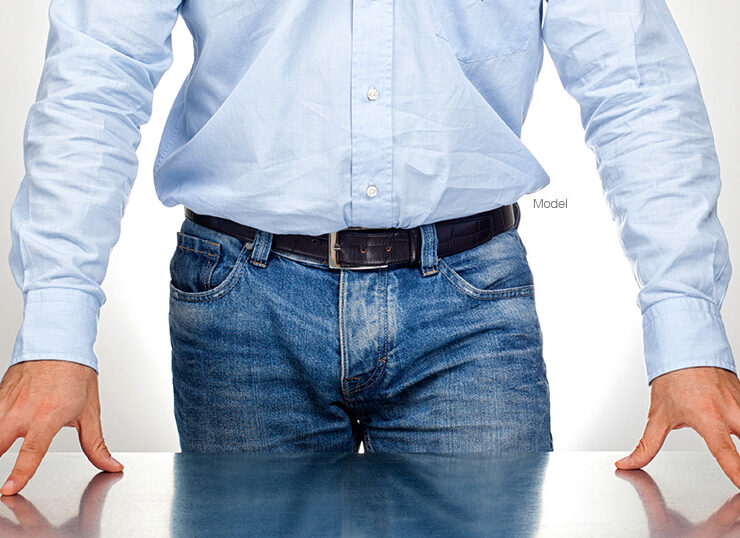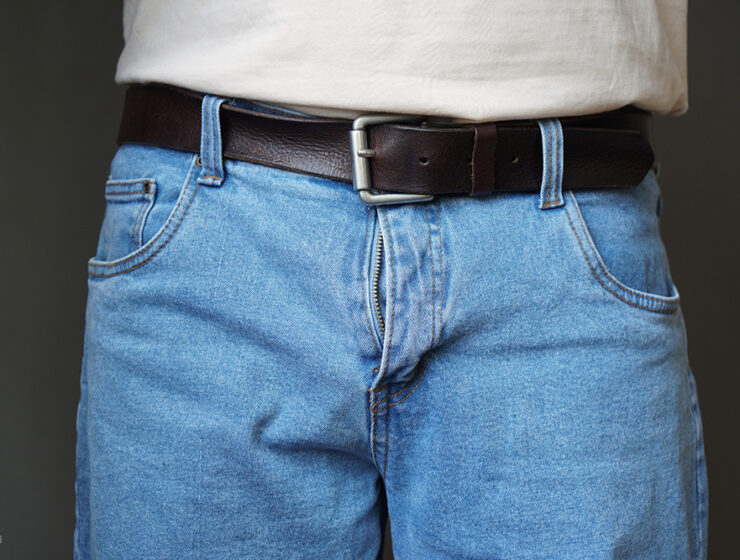Labiaplasty offers both physical and emotional benefits for women who dislike the look and projection of their labia minora. But is this procedure covered by health insurance? This blog discusses what benefits…

Over the years, Dr. Alter has seen a large number of complications and cosmetic penile deformities stemming from penis enlargement surgeries and injections of various types. The spectrum of complications has changed as the procedures have changed over the years. The correction of these deformities must be individualized depending on the previous procedure, the patient desires, and the possible achievable result. Patient expectations must be realistic as the deformities may be severe and complete reconstruction impossible. The reconstruction is done using plastic surgical principles and techniques, many of which Dr. Alter has developed over more than 25 years of operating on hundreds of these men. He has extensively published and lectured on these reconstructive procedures.
These deformities can be divided into different reconstruction categories, with each having their unique problems and limitations.
In these ill-conceived procedures, large-volume fat injections were often also used to increase girth. Specific complaints related to this lengthening procedure using VY flaps include:
The most severe deformity occurs when the soft penis is surrounded by the scrotum, and the penis retracts under a thick VY flap and pubic fat pad.
Procedure(s)
During the past 25 years, Dr. Alter has reconstructed over 200 men with these deformities. The low-hanging penis with an unsightly hairy, dorsal hump at its base is caused by a VY advancement flap and is reconstructed by reversing the flap and replacing it in its normal position. At the same time, the wide, unsightly scars are excised and revised using plastic surgical techniques. Lumps and fat nodules resulting from fat injections are removed through incisions in the lower pubic hair, along the natural line in the middle of the underside of the penis, in the scar from a previous circumcision, or in a previous surgical scar. No new scars are made on the penis.
If the penis has a large amount of fat with a VY advancement, the reversal of the VY advancement flap is not done at the same time as large volume fat removal for fear of causing injury to the tip of the V-flap or prolonged swelling of the penis. Usually, the VY flap is reversed first along with the removal of a limited amount of fat. Six months later, more aggressive fat removal can be performed.
Girth Injections Using Fat, PMMA, Silicone, And Unknown Substances
Complications relating to fat or filler injections include:
Some of the fillers can attach to the underside of the skin, creating firm, immovable nodules or even skin loss.
Procedure(s)
Contouring or removal of the fat or filler is performed through a new or old circumcision incision or scar, along the natural line along the middle of the underside of the penis, or in a previous surgical scar. No new scars are made on the penis.
Removal of all fat or filler is impossible. The goal is contouring of the penis according to the wishes of the patient. The filler was injected into the loose vascular tissue between the erectile chambers and the skin. This tissue called dartos fascia gives the normal slide to the penile skin and supplies some of the blood supply to the skin. A thin layer of the dartos fascia must be kept attached to the skin or the skin can die. Therefore, undesirable nodules or firm areas of PMMA, etc. cannot be totally removed if this injectable is infiltrating the dartos up to the skin. Removal is also difficult near the course of the nerves and vessels which go to the head of the penis. Removal of the injectable throughout the penis can therefore be risky.
The patient must understand that penile contouring to improve the texture and appearance of the penis is the goal and that total removal is not possible. Every attempt to achieve the patient’s expectations will be made. but it must be done safely. Therefore, PMMA, silicone, and other unknown filler removal may require several operations for debulking and contouring.
Complaints relating to dermal or dermal-fat grafts include:
Procedure
Dermal, dermal-fat grafts, and Alloderm can usually be totally removed through a circumcision incision, a longitudinal incision on the underside of the penis, or a low pubic incision. Removal of the scarred graft usually eliminates the deformity, curvature, or penile restriction. However, the removal can be very difficult if the graft is attached firmly to the nerves and vessels on the shaft leading to the head of the penis.
At times, the patient may have or develop a restrictive scar at the base of the penis leading to the pubic area. This scarred tissue can occur before or after the reconstruction and several cortisone injections or surgery for correction may be necessary.
Complaints include:
Procedure(s)
This solid silicone implant was inserted on top of the erection chamber through a lower pubic incision. Removal is done though the previous incision. The implant is often sutured under the head of the penis with a silicone mesh placed close to the fine nerves that provide the sensation to the head of the penis. Removal of the main portion of the implant is not difficult, but it can be extremely difficult to remove all the mesh without injuring the nerves. In addition, the body creates a scar capsule around the implant similar to the scar capsule from breast implants. Dr. Alter tries to remove as much of the scar capsule as possible, since an empty capsule creates a cavity that can accumulate fluid, and the scar capsule can interfere with penile length excursion, thereby shortening the penis. The removal of the capsule can be very difficult and total removal of the capsule attached to the nerves is usually impossible.
Reconstructive surgery is usually not very painful. Most patients are required to stay nearby for about 5-6 postoperative days, because drains are inserted to prevent fluid collections. All wound closures are performed with meticulous plastic surgical techniques.
A majority of Dr. Alter’s patients have been very pleased with their penile reconstruction, with many reporting a near normal appearance. The key to the reconstructions is to know the limitations as to what is safe, while trying to achieve the patient’s expectations. These surgeries can be very challenging and require experience and plastic surgical expertise.
Dr. Alter and the entire team are dedicated to providing every patient with exceptional individualized care—from consultation to recovery. We take the time to learn about your concerns, goals, and desires, so we can build a plan that addresses your concerns and gets you the
results you deserve.

Labiaplasty offers both physical and emotional benefits for women who dislike the look and projection of their labia minora. But is this procedure covered by health insurance? This blog discusses what benefits…

Buried penis is not uncommon and can severely affect a person’s emotional and physical well-being. Dr. Gary Alter performs a corrective surgery to remedy this issue. This blog discusses the causes and…

This blog discusses buried penises, including how they happen, who is affected, and what the corrective surgery involves. 4 Min Read: Table of Contents What Is a Buried Penis? A buried or…

